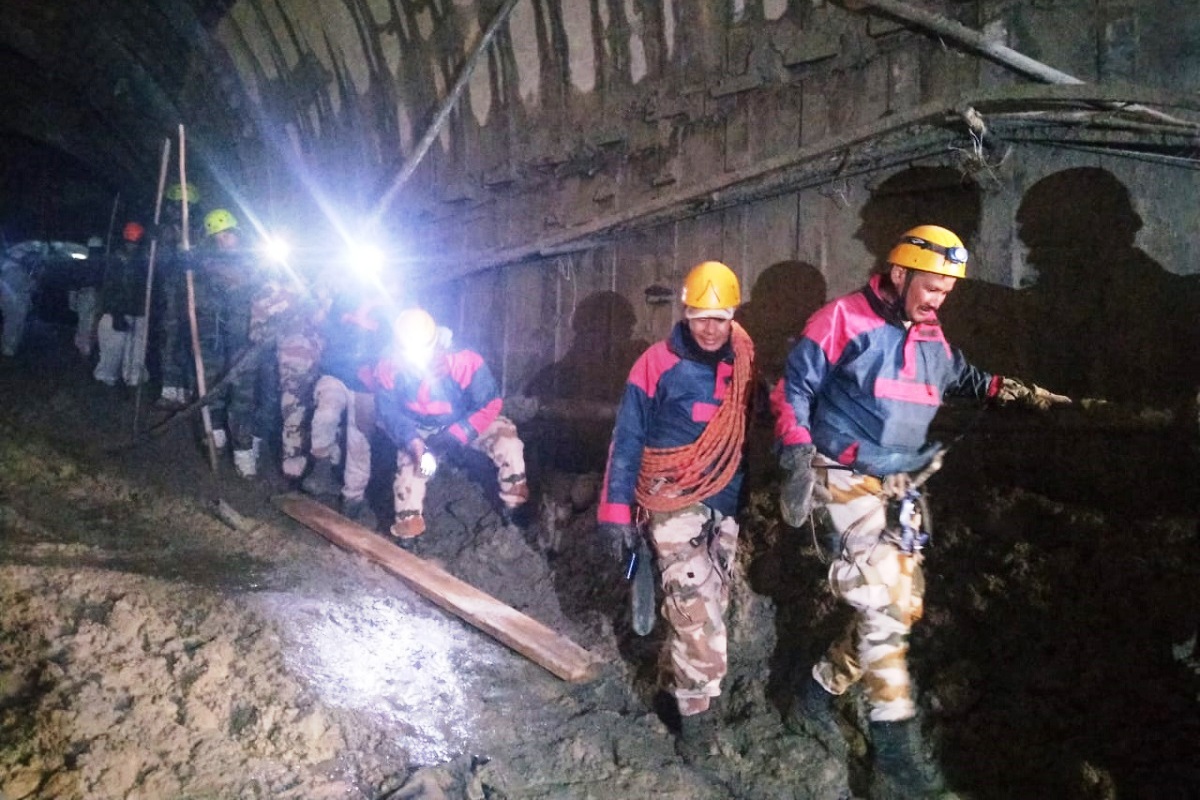Initiative to detect active TB cases in UP and Uttarakhand
The initiative is undertaken by the Institute of Heart and Lung Diseases (IHLD) in collaboration with Krafton India.
The report by Kathmandu- based ICIMOD, which was released on Friday, found that a crack had formed prior to the incident at the site where the rock detachment led to a rockslide from the Raunti peak. The rockslide brought along with it mounds of earth and snow which could have triggered the flash floods. With a straight slide line of 1.6 km, the kinetic energy during the fall generated enough heat to melt the ice.

Rescue team inside the Tapovan tunnel in Chamoli (SNS)
Heavy precipitation in the Chamoli region from February 4-6 and an overall rise in temperature in Uttarakhand in last four decades could have led to the rock collapse which triggered the deadly flash floods in the state last month, according to a study by the International Centre for Integrated Mountain Development.
The report by Kathmandu- based ICIMOD, which was released on Friday, found that a crack had formed prior to the incident at the site where the rock detachment led to a rockslide from the Raunti peak. The rockslide brought along with it mounds of earth and snow which could have triggered the flash floods. With a straight slide line of 1.6 km, the kinetic energy during the fall generated enough heat to melt the ice.
As the debris moved downstream in the Rishiganga river, it pushed running river water ahead of i t , including water from small ponding structures along the river path.
Advertisement
So far 72 bodies and 30 human body parts have been recovered from different places in the avalanche-hit areas, out of which 41 bodies have been identified. As many as 132 persons are still missing.
The ICIMOD is a regional organisation that works on different aspects in the Himalayan-Hindukush region.
At the same headwall of the Raunthi peak, a large ice avalanche was previously released somewhere between 19 September and 9 October 2016, which deposited ice and more bedrock in the valley below, the report states.
The resulting destabilisation of the rock due to the lack of ice cover (glacial debuttressing, stress-release fracturing), and increased exposure to solar radiation and hence an increased freeze thaw cycle, in combination with a large snowfall event preceding the event of 7 February, 2021 and rapid melt water production, may have favoured the fracturing of rock, the report states.
This can, however, not explain the depth of the fracture (150 metres), which must have evolved over a longer period of time, the report states.
The ICIMOD report further states that a strong western disturbance passed across Kashmir and northwest India from 4-6 February. It was fully charged with convective instability that may have contributed to the heavy precipitation. The Uttarakhand tragedy occurred on 7 February.
The temperatures are also rising in Uttarakhand, the report states, saying maximum temperature in the Chamoli area has increased at the rate of 0.032 degrees Celsius per year between 1980 and 2018. January 2021 was the warmest January on record in Uttarakhand for six decades.
~With inputs from PTI~
Advertisement